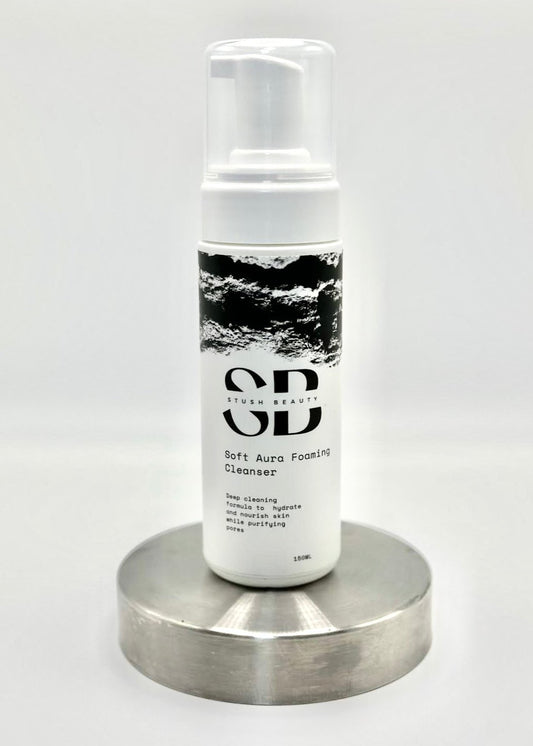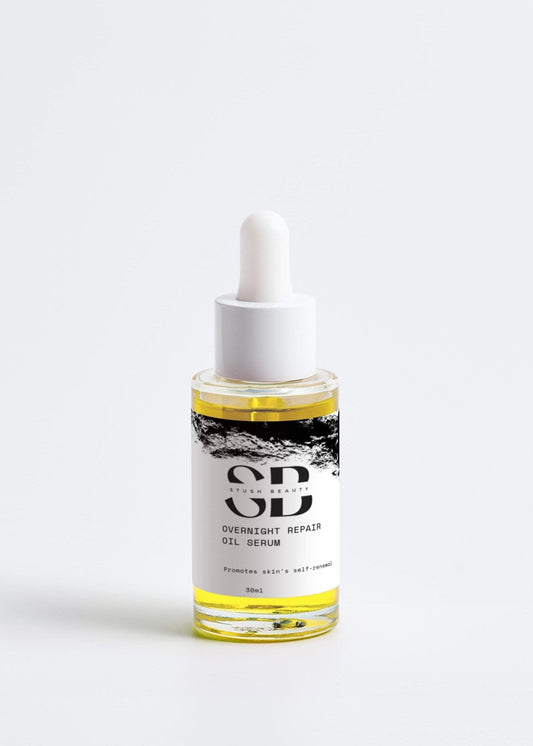Preserved to Perfection: Are Parabens, MIT, BHA, and BHT Really Safe for Your Skin?
Preservatives are the quiet heroes of skincare. They keep your cleanser free from mold, your serum safe from bacteria, and your moisturizer protected from the daily dip of your fingertips. Yet they are some of the most misunderstood ingredients on your label. Parabens are often labeled “hormone disruptors,” MIT shows up in allergy alerts, and BHA/BHT spark debates about long-term health and environmental impact. If you love intentional beauty and want your ritual to be both luxurious and safe, this guide will bring clarity—grounded in dermatology, cosmetic chemistry, and evolving regulations—so you can choose what works for your skin and your values.
The Case for Preservatives—and the Truth About Parabens
Any product that contains water needs microbial control. Without it, creams and gels can grow bacteria, yeast, and mold. This isn’t just a “yuck” factor; contaminated products can cause eye infections, rashes, and stubborn breakouts. Good preservation is like refrigeration for your skincare: largely invisible, yet absolutely essential.
Parabens are a family of preservatives—methyl-, ethyl-, propyl-, butyl-, and others—used for decades because they are broad-spectrum, stable, and effective at very low doses. Some studies have raised concerns about weak estrogen-like activity in lab tests. Context is key: these signals appear at concentrations far higher than what’s present in finished products, and real-world skin exposure leads to very low systemic levels.
Regulators weigh in with clear guidance. In Europe, short-chain parabens like methyl- and ethylparaben are allowed within established concentration limits, while some longer-chain parabens are banned due to higher uncertainty. Propyl- and butylparaben are permitted under tighter limits and with added caution for products aimed at young children. In the U.S., parabens remain allowed provided products are considered safe under labeled or customary use. The 2022 MoCRA law now requires companies to maintain safety substantiation and report serious adverse events, adding a new layer of accountability.
Dermatologists note that parabens have a relatively low rate of contact allergy compared to several alternative preservatives. This is especially important for sensitive or melanin-rich skin, where irritation can trigger post-inflammatory hyperpigmentation. If parabens work for you, they can be a well-tolerated choice. If you prefer to avoid them, do so out of preference rather than fear, and ensure the alternative system is robust.
MIT/MCI, Phenoxyethanol, BHA/BHT, and Organic Acids—What Science and Clinics Suggest
Methylisothiazolinone (MIT) and its cousin Methylchloroisothiazolinone (MCI/MI) were once widely used as powerful, economical preservatives. However, they became major causes of allergic contact dermatitis, particularly in leave-on products and wipes used on the face, hands, and children. Europe removed MIT and the MI/MCI blend from leave-on products and severely restricted them in rinse-offs. For sensitive skin, eczema, or recurring rashes around the eyelids, it’s wise to avoid labels listing these compounds in leave-on products.
Phenoxyethanol is today’s most common paraben alternative, considered safe in leave-on and rinse-off products at typical concentrations (usually up to 1%). It is well-studied with a comparatively low rate of allergy or irritation. A small subset of users may find it drying around the eyes or lips, so patch testing new products on the jawline for a few nights can help.
Formaldehyde-releasing preservatives—like DMDM hydantoin, imidazolidinyl urea, diazolidinyl urea, quaternium-15, and bronopol—release trace formaldehyde to keep microbes at bay. Formaldehyde is a strong sensitizer and these releasers are among the top preservatives causing allergic reactions in patch testing. If you have a history of dermatitis or unexplained rashes, it’s wise to avoid these in leave-on products.
BHA (butylated hydroxyanisole) and BHT (butylated hydroxytoluene) are antioxidants that prevent oils from going rancid, stabilizing products rather than killing microbes. Safety reviews have found typical cosmetic concentrations acceptable, though both attract scrutiny for environmental persistence and high-dose animal data. Contact allergy is uncommon, but for those who prefer to minimize exposure, alternative antioxidants like vitamin E or rosemary extract are available.
Organic acid systems, including benzoic acid, sorbic acid, dehydroacetic acid, salicylic acid, benzyl alcohol, and multifunctionals like certain glycols, often rely on a lower pH and additional “hurdles” such as chelators, airtight packaging, and rigorous hygiene. Some acids can sting on compromised skin, and salicylic acid is restricted in baby products, but when well-designed and challenge-tested, these systems can maintain safety while appealing to “clean” preferences.
The Real Risk of “Preservative-Free” Products
Viral posts promising “preservative-free” skincare may seem enticing, but water-based products without proven preservation can grow microbes within days of opening. Contamination risk increases if you dip fingers in jars, store products in warm bathrooms, share products, or use mists or droppers that pull air back into the bottle. Brands that publish or stand behind preservation challenge tests are more reliable. Truly preservative-free products should rely on sterile manufacturing, airless packaging, tight pH control, and validated microbiological testing.
How Skin Type, Season, and Hormones Change the Picture
Sensitive or eczema-prone skin is more likely to react to high-sensitizer preservatives like MIT/MCI and formaldehyde-releasers. Favor fragrance-free formulas and low-allergen systems in leave-ons. For melanin-rich skin, even a mild irritant can leave lingering dark marks, making reducing allergens a key strategy for preventing post-inflammatory hyperpigmentation. Dry, cold seasons thin barrier lipids and increase transepidermal water loss, which makes skin sting from even mild acids or alcohols. Hormonal shifts and stress can also raise sensitivity, so stick with gentle, well-preserved basics when your skin feels reactive.
Practical Shopping Cues for Safer Skincare
Prioritize leave-on products first, as they remain on the skin for hours. Look out for high-sensitizer preservatives such as methylisothiazolinone, methylchloroisothiazolinone, quaternium-15, imidazolidinyl urea, diazolidinyl urea, and DMDM hydantoin. Short-chain parabens are widely considered safe at regulated levels, while longer-chain types are disallowed in Europe. Phenoxyethanol is generally well tolerated up to 1%, and antioxidants like BHA/BHT can be replaced with vitamin E or other alternatives if desired. Packaging also matters: airless pumps and tubes reduce contamination, while jars should be used with a clean spatula. Respect the PAO (Period After Opening) symbol—most water-based products last 6–12 months, but if a product smells off, separates, or changes color, discard it.
Dermatologist-Aligned Mini Routine for Calm, Safe Skin
Morning: Start with a gentle cleanse. Soft Aura Foaming Cleanser resets your skin without stripping, keeping your barrier strong. Follow with Niacinamide + B3 Gel Moisturizer to hydrate, strengthen barrier lipids, and even tone. Finish with a tinted mineral SPF with iron oxides to protect melanin-rich skin and prevent visible-light darkening of spots.
Evening: Cleanse gently to remove the day. Stick to one treatment lane—alternate retinoids with easy nights if your skin tolerates them, or focus on niacinamide or azelaic acid if reactive. Exfoliation with lactic or mandelic acid once weekly is sufficient. Seal moisture with Skin SOS Moisturizer, powered by aloe and hyaluronic acid, to maintain hydration overnight.
Sustainability and “Clean” Beyond the Label
Strong preservation prevents waste. Spoiled products are neither safe nor sustainable. Regulators increasingly evaluate ingredient families to manage environmental impact, leading to more transparency. Smart formulation beats long “no” lists—a well-preserved, low-allergen, pH-balanced formula in airless packaging is often safer for sensitive skin than a “free-from” product that sacrifices proper preservation.
How Tech Can Support Your Skincare Routine
Tracking triggers with a skin journal or app helps pinpoint irritants, especially around the eyelids or neck. Photographing progress monthly in consistent lighting makes it easier to identify early irritation or improvements in tone.
When to See a Dermatologist
Recurring rashes, eyelid eczema, or perioral dermatitis warrant patch testing, including extended panels for preservatives and fragrance allergens. Precision helps you avoid only what your skin dislikes, rather than everything.
Your Bottom Line
Preservatives are essential in water-based skincare. Short-chain parabens remain among the lower-allergen, well-studied options. MIT/MCI and formaldehyde-releasers are common allergens and should be avoided if you’re sensitive. Phenoxyethanol is a widely accepted alternative with a favorable safety profile. BHA/BHT are effective antioxidants but can be substituted based on preference and skin history. For melanin-rich and sensitive skin, reducing irritation is the fastest path to an even, calm complexion.
The Stush Beauty Edit for Safe, Serene Skin
Soft Aura Foaming Cleanser provides a plush cleanse without compromising your barrier, perfect for sensitive mornings or seasonal stress. Niacinamide + B3 Gel Moisturizer combines hydration and tone support in one elegant step, delivering results without irritation. Skin SOS Moisturizer, powered by aloe and hyaluronic acid, locks in hydration overnight, keeping skin calm during seasonal shifts or travel.

A Thoughtful Close: Choose Clarity Over Fear
You don’t need a chemistry degree to build a safe routine. Prioritize brands that rigorously test, use preservation systems aligned with your skin’s tolerance, and package thoughtfully. Keep your barrier strong, your routine simple, and your senses grounded in how your skin feels. That’s the slow, luxurious path to clear, even, resilient skin—preserved to perfection.




